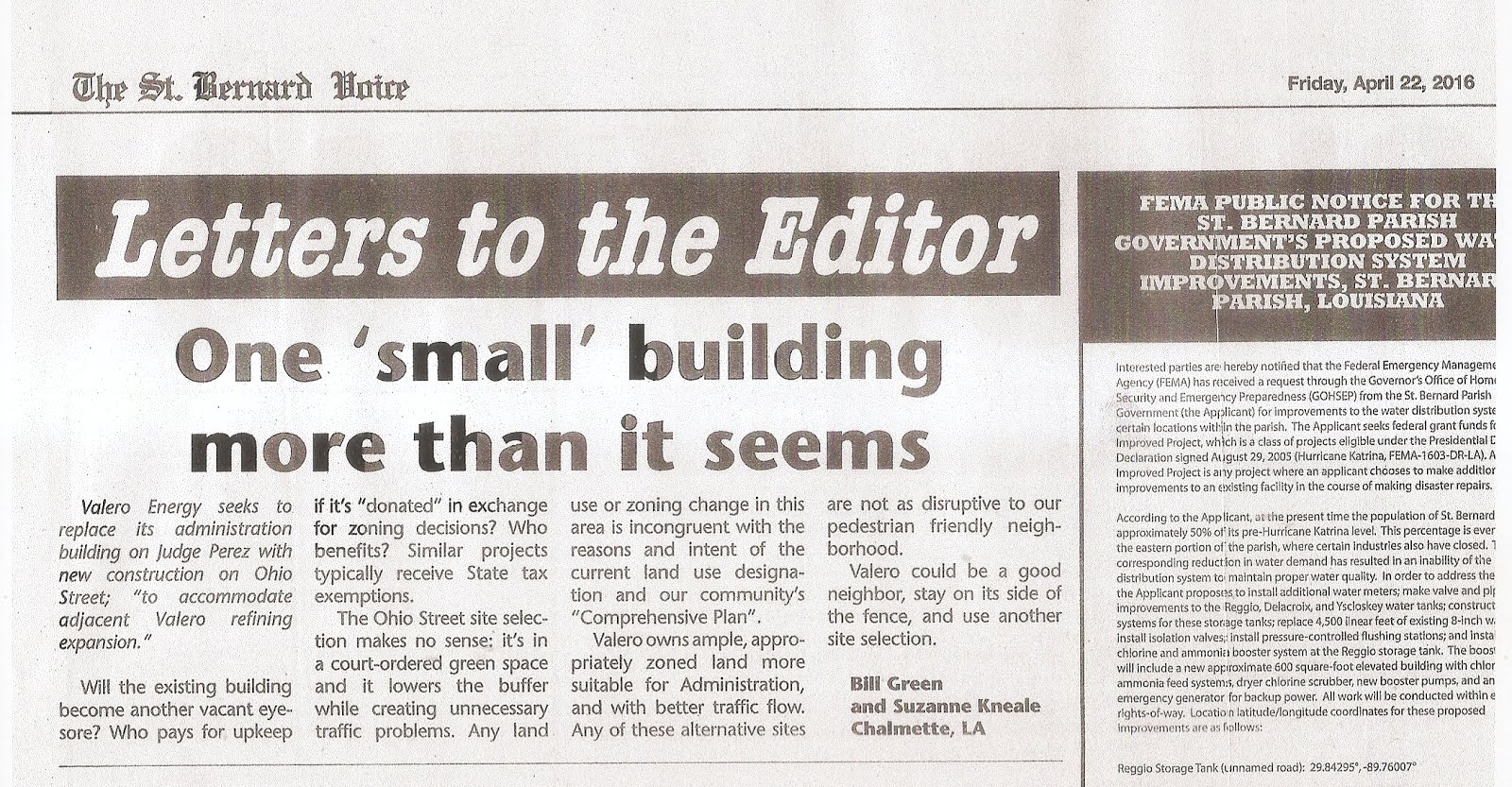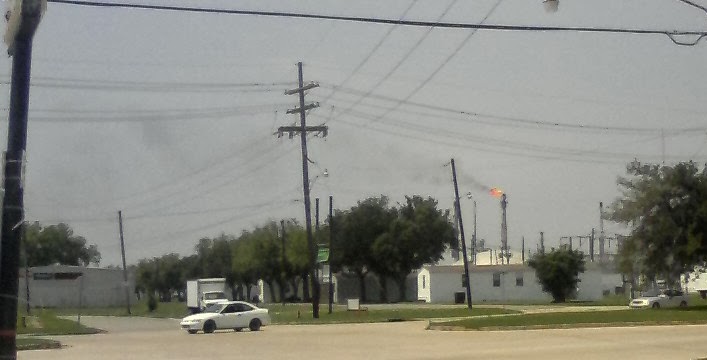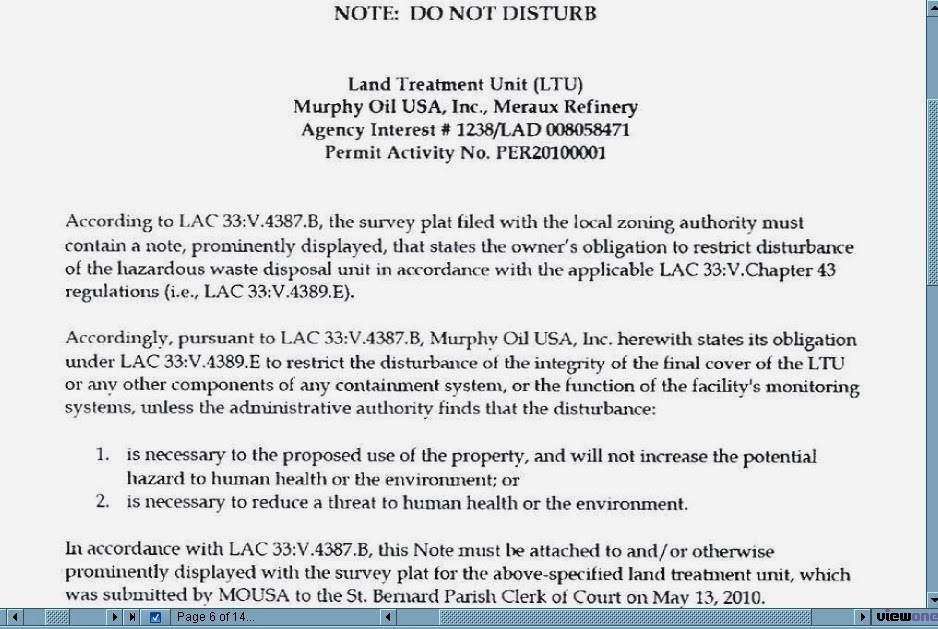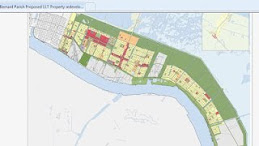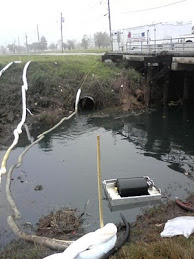August 2023 UPDATE
PBF Energy's Chalmette Refining continues to report high benzene levels; this has been a years-long high benzene level since early 2021 reports that included suspected offsite sources, yet to be identified.
In addition to its required inspections, PBF Energy has invested in additional monitoring, including an initial geospatial monitoring of air pollutants (GMAP) of the refinery in mid May 2023 and a follow up in mid July 2023. In the August 2023 report, all identified tank deficiencies are reported as repairs completed.
PBF Energy is in process of developing a further tank monitoring plan. The LDEQ EDMS link is now available here: https://edms.deq.louisiana.gov/app/doc/view?doc=13961589
The updated EPA's Benzene "Dash Board" is pending.
EPA Benzene "Dash Board" data is available at link by selecting Region 6, Louisiana, Chalmette Refining from the upper menu and then selecting the "monitoring trends" graph on the lower right. This monitoring trends graph displays two week averages from each fence line monitor. Each monitor's location is available by switching back from "monitoring trends" to "monitors" graph.
PBF Energy's 2nd Quarter 2023 report includes all sample periods in the 2nd Q2023 in which the sample period △C was greater than 9ug/m3, and are reports as high as 26, 16, 18, 26, 12, 13. There is no indication of which monitor(s) recorded the high readings. The EPA action level is 9. If the Annual rolling average for the refinery is 9 or above, the refinery makes required reports of monitors with two week averages greater than 9ug/m3 to LDEQ EDMS, along with any root cause analysis information. Each monitor's two week average information becomes available on the EPA "Dash Board" for all refineries regardless of the Annual rolling average. There is no access to real time data. Although some refineries, including PBF Energy and Valero Energy, have their own separate websites, which do provide real time data for all fence line monitoring at the select locations. However, here in St Bernard Parish Louisiana, neither PBF nor Valero provide such information to the communities.
For the following 2 week periods at PBF Energy's Chalmette Refining, the LDEQ EDMS report (obtained via public records request) indicates two week averages of benzene as:
3/21 - 4/04 26 ug/m3
4/04 - 4/7 16 ug/m3
4/17 - 5/02 18 ug/m3
5/02 - 5/17 26 ug/m3
5/17 - 5/31 12 ug/m3
6/13 - 6/27 13 ug/m3
Tank deck fitting deficiencies identified on several (at least 7) tanks in May 2023
Several other tank's seal deficiencies identified in April and May 2023
Additional geospatial monitoring of air pollutants (GMAP) of the refinery in mid-May and Mid-July identified additional tanks for deck fitting inspections.
All repairs completed by June 30 2023. A secondary deck fitting issue on one tank detected July 2023, repaired August 2023
All tank seals repaired by July 31 2023
PBF Energy is in the process of developing a monitoring program aimed at detecting potential issues with tank deck fittings, expected plan development by Sept 30 2023
UPDATED
In St Bernard Parish, residents highly value living in a community with a clean environment, free of air, water, and land pollution. We are dependent on EPA and LDEQ to achieve that goal.
We can’t remember a time when the air quality in St Bernard was attainment for sulfur dioxide, and now the EPA Refinery Rules benzene fence line monitoring two week averages demonstrate persistent issues in the industrial corridor along West St Bernard Highway in Chalmette. [1]
We have years of monitoring data for both the benzene and the sulfur problem and no meaningful solutions for either. What we need is lower air permit limits and more consistent compliance with the Clean Air Act – without which attainment may never occur.
“In St Bernard strict compliance with Title V permit limits is paramount to air quality attainment, as emissions limits used in modeled design values are within a thin margin of attainment ("little margin of safety").” [emphasis added]
In communities already overburdened with air pollution and frequent weather events, “every single unauthorized emission event is consequential”, every excess emission amount is harmful. As EPA concurrently reviews several parts of LDEQ’s air regulations’ SIP (State Implementation Plan to comply with the Clean Air Act), it should be a comprehensive approach, including consideration of the cumulative effects of the many different chemicals in the air we are forced to breathe and the public health, human risk factors, and quality of life consequences.
LDEQ is currently working on possible revisions to its State Implementation Plan, “SIP”. One such SIP is LDEQ’s revised plan to bring the air quality of sulfur dioxide in St Bernard into safer levels, called attainment. LDEQ is expected to present that sulfur plan sometime this Fall 2023 for public comment and EPA approval. LDEQ recently presented its annual report for its statewide air monitoring network, which is also subject to EPA’s approval process. EPA is concurrently reviewing public comments on its proposed rule to change how States address excess emissions during times of startup, shutdown, and malfunction. [Federal Registry Feb 24 2023 at 11842-11865 (page numbers)]
EPA needs to be thorough and stand up to any political hindrances to compliance with the Act.
[1] Benzene monitoring reports have been as high as 58 and 38 ug/m3 two week average !!
Measures of 9 ug/m3 or higher is the trigger for corrective action.
Reports in LDEQ EDMS for the EPA Refinery Rules benzene fence line monitoring indicate years-long benzene issues in that industrial corridor in Chalmette along West St Bernard Highway and with river traffic emissions. This is the same area a new diesel renewals plant is under construction.
April 2023 report: ongoing investigation including project to monitor storage tanks
https://edms.deq.louisiana.gov/app/doc/view?doc=13793875
September 2022 to December 2022 : 2 week averages benzene as high as 15,12,10, 9.3, 9.9, 38, 35, 17, 11, 16, 16, 22 ug/m3
https://edms.deq.louisiana.gov/app/doc/view?doc=13700866
July 2022 to August 2022 two week averages benzene as high as 16, 11, 11, 21, 21, 12 ug/m3
https://edms.deq.louisiana.gov/app/doc/view?doc=13569016
March 2022 to June 2022 two week averages benzene as high as 9, 12, 14, 7, 27, 56, 22 ug/m3
https://edms.deq.louisiana.gov/app/doc/view?doc=13569018
December 2021 both two week averages benzene were 31 and 26 ug/m3
both attributed to offsite sources
https://edms.deq.louisiana.gov/app/doc/view?doc=13173297
2nd Quarter 2021 two week averages in early April and in mid June were both 10 ug/m3
https://edms.deq.louisiana.gov/app/doc/view?doc=12885878
1st Quarter 2021 two week averages late February through March both 18 ug/ms
https://edms.deq.louisiana.gov/app/doc/view?doc=12742641
2019 through 2020 supplemental information for first quarter 2019 through fourth quarter 2020 for when the rolling annual average benzene was greater than 9 ug/m3; this report is about corrective actions taken
https://edms.deq.louisiana.gov/app/doc/view?doc=13673146
We appreciate that PBF Energy’s Chalmette Refining (AI # 1376) stepped up and invested in its sludge centrifuge and other refinery investments for corrective actions to reduce benzene emissions. We appreciate that PBF Energy made an additional investment in field gas chromatograph (GC) monitoring to aid in determining potential benzene sources. Our understanding is that based on the near real time results and correlation to meteorological data the indicators point to two suspected offsite sources (one to the West and one to the South of the Chalmette refinery). A report posted to LDEQ EDMS in April 2023 notes a recent ongoing project to monitor storage tanks for about six weeks, into early June 2023. The April 2023 report also notes the additional monitoring is inconclusive that off site sources are solely responsible for elevated levels.
https://edms.deq.louisiana.gov/app/doc/view?doc=13793875




